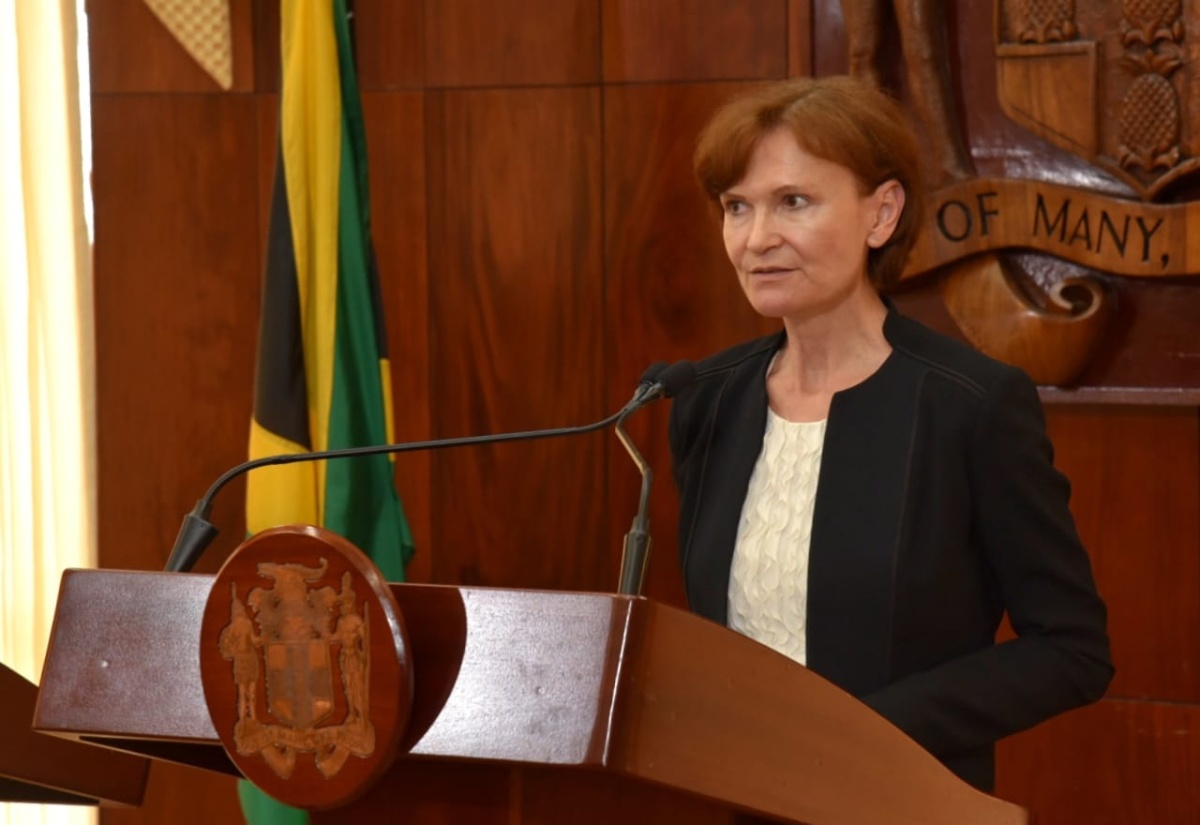St. Elizabeth, St. James, Westmoreland Sustained US$5.5 Billion in Damage from Hurricane Melissa
By: , November 20, 2025The Full Story
The parishes of St. Elizabeth, St. James and Westmoreland experienced the worst impact from hurricane Melissa, accounting for US$5.5 billion in damage, says World Bank’s Country Director for the Caribbean, Lilia Burunciuc.
The figure is 63 per cent of the total damage sustained across the island, which amounts to a record US $8.8 billion, she informed.
Ms. Burunciuc was presenting the Global Rapid Post-Disaster Damage Estimation (GRADE) report during a special press briefing on Hurricane Melissa Recovery at Jamaica House on Wednesday (Nov. 19).
She noted that the US$8.8 billion in physical damage from the hurricane exceeds recent similar historical events.
It is equivalent of approximately 41 per cent of Jamaica’s 2024 gross domestic product (GDP), Ms. Burunciuc said.
The GRADE assessment was conducted by the World Bank in collaboration with the Inter-American Development Bank (IDB) and the United Nations (UN) Economic Commission for Latin America and the Caribbean (ECLAC).
GRADE uses sophisticated techniques like catastrophe modelling, satellite imaging and social media to estimate the direct cost of damage in a short time to inform early decision making.
Results are categorised by parish and in four asset classes – residential, non-residential, infrastructure and agriculture.
The World Bank Country Director explained that residential building damage accounted for US $3.7 billion or 41 per cent of the total estimated damage seen across the island.
She noted that this category includes houses and their contents and mixed-use buildings that are characterised as residential.
The second category, non-residential buildings and their contents, accounts for 20 per cent of the total damage or US$1.8 billion.
“This [category] includes commercial, industrial, tourism, public buildings and non-residential qualified as mixed-use buildings and their contents,” Ms. Burunciuc explained.
Infrastructure damage, the third category, was estimated at US$2.9 billion, or approximately 33 per cent of total damage.
It covers damage to power networks, water networks, telecoms, seaports, jetties, coastal structures, airports, roads and bridges.
The fourth category, agriculture damage, is estimated at US $389 million with notable impact to the fishing sector, livestock, dairy, cash crops, vegetables and fruit trees.
Ms. Burunciuc pointed out that the figures presented capture physical damage, noting that economic damage such as lost sales and lost tourism arrivals are likely to be at the same or an even higher level.
She emphasised that the total estimated damages from Hurricane Melissa exceed any recent historical event.
“This means that the recovery will be an enormous and long-term task. It will require a well-coordinated strategic approach to ensure speed, efficiency and transparency and a whole of society effort from local institutions, the private sector and from communities,” the World Bank Country Director said.
She added that the substantial residential damage, although significant, gives Jamaica an opportunity to “build forward better”.

